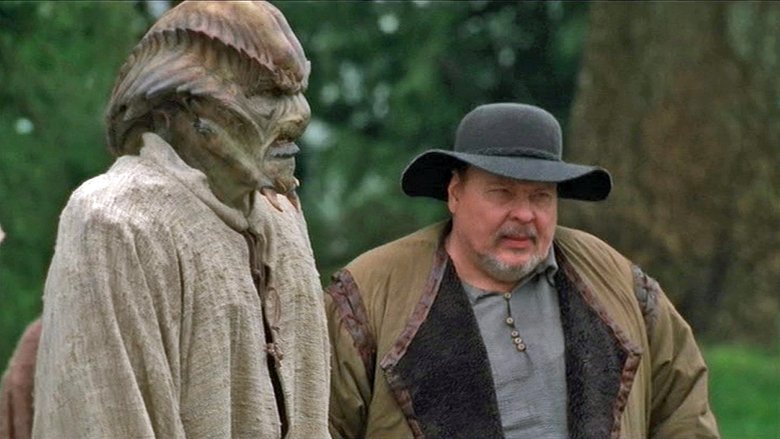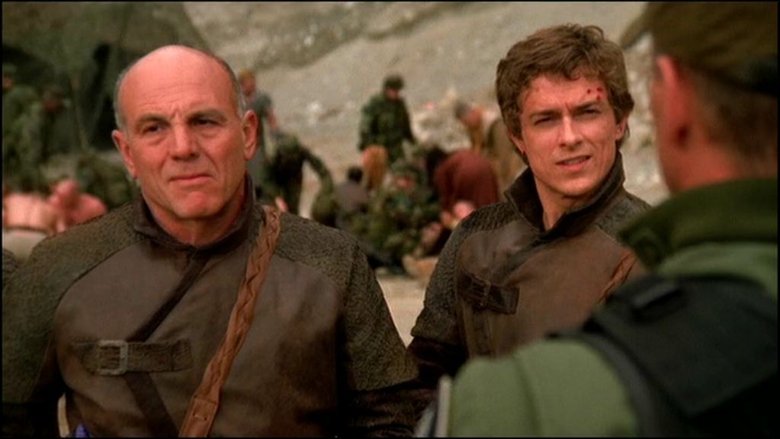

STARGATE SG1 A HUNDRED DAYS MOVIE
It’s iconic, it’s weird and John and his crew had to not only recreate it on a TV budget but do so weekly, at the same time as not contradicting the movie or alienating an element of the still-nascent Stargate SG-1 fandom. When you think of the Stargate movie you think of James Spader’s fantastic mop of hair and Kurt Russell’s first real experimentation with being grim, dutiful, and tragic, but then your mind goes to that simpler place: Space! Pyramids! and Space Gods! And then kawoosh! – the noise the Stargate’s unique, liquid effect made as it activated.

And they said, ‘Well, that’s too much like Space: 1999.’ And then they came up with the absolutely perfect almost-circular form.ĬGI Fridays | Jeff Kleiser’s Strange Journey from Super-8 to Stargateįrom Tron and Tide to Stargate‘s breathtaking transformations, Jeff Kleiser shares his story with Ed Kramer in the second episode of his CGI Fridays podcast. It was really the Blockade Runner at the beginning with that nose. The original design for the Millennium Falcon was very, very similar. There’s actually an interesting story with respect to Star Wars, because the Eagle had come out and Space: 1999 a couple of years before Star Wars came out.

“It’s actually one of the best-looking spaceships that have been created for some kind of drama. “It’s probably the show that got me into visual effects,” Gajdecki enthuses.
STARGATE SG1 A HUNDRED DAYS SERIES
As we caught up with him over Zoom at the start of the pandemic, our eyes are instantly drawn to a newly constructed Eagle Lander from Gerry Anderson’s dystopian ’70s series Space: 1999. Like many VFX veterans who began their careers in the analog world, Gajdecki is also a keen scale modeler. Simon Lacey has since worked on A Series of Unfortunate Events and Shadowhunters, whilst Jean-Luc Dinsdale has been visual effects supervisor on Arrow and Loki. Choi, John Gajdecki, Simon Lacey, and Jean-Luc Dinsdale – part of the visual effects team on Stargate SG-1. John’s work is defined by his enthusiasm and his attention to detail and there’s no better example of that than in the challenges he faced helping transfer 1994’s visually striking Stargate movie from the big screen to the small for its first two seasons. He’s both worked on a ton of them and defined a lot of the visual grammar for modern genre TV. Gajdecki was one of the first visual effects supervisors for what would become a decades-long wave of genre show shooting in Canada.

Jonathan Glassner, and his SG-1 co-creator Brad Wright, had previously worked with Gajdecki on The Outer Limits. Stargate SG-1 VFX supervisor John Gajdecki (left) and Stargate SG-1 co-creator Jonathan Glassner (right) on location somewhere in Canada. So they got me on, on Outer Limits, which I did for two years, and then left. And Atlantis said, Well, there’s this guy named Gajdecki who did our effects on TekWar, and we think you should talk to him. Basically, MGM was doing The Outer Limits, they were doing it in partnership with a company called Atlantis. And then I was invited to go to Vancouver to work on Outer Limits by the same producers who did TekWar. We worked really hard together for several years. “I did a show called TekWar with William Shatner,” explains Gajdecki, “who I got to know quite well. His work as a visual effect supervisor stretches from 1988’s Friday the 13th: The Series all the way through to 2021’s Superman and Lois, via a trip to the big screen for cult horrors like James Gunn’s Slither (2009) and Joe Dante’s The Hole (2009).Īnd then there’s Stargate SG-1 – a journey that began in Six Degrees of Kevin Bacon sort of way with William Shatner’s series of (ghostwritten) TekWar novels and the notoriously naff TV show it inspired. If you’ve watched an American genre TV show made in the last 30 years, there’s a good chance you’ve seen the ingenious work of John Gajdecki. VFX supervisor for Stargate SG-1’s first two seasons, John Gajdecki recreated the look of the movie with CGI, models, and a back issue of Cinefex.


 0 kommentar(er)
0 kommentar(er)
